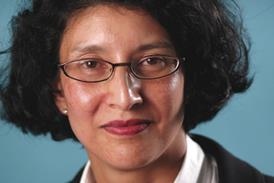The Bank of New York (BNY) has no doubts about its position in the world. “In the last few years we have transitioned ourselves to where we are today as the major securities services provider in the world,” says Thomas Perna, senior executive vice president, based in New York.
“We have done a number of acquisitions, as we continue to develop internally to fill out our product suite.” The bank plays in a greater number of new spaces, he says pointing to the recent Pershing acquisition, which added the “undisputed leader in the correspondent clearing business in the US and Europe”. “This was a franchise we had coveted for a number of years and was a good fit.”
The strategy over the last 10 years has been to move more into the securities services operating businesses and divest the bank of those that did not fit strategically. “So we have sold the credit card and factoring businesses.” Today the securities servicing part of the business provide 80% of the revenue streams, with now 30% coming from outside the US, primarily Europe. “We are now out in the world looking aggressively for new customers and strategic acquisitions.”
BNY reckons it is now the largest agency execution brokerage. “The aim is to provide more and more services to an ever increasing customer base in all of the financial services segments around the world.”
In particular the pension market, both in the US and the UK and increasingly continental Europe is a key focus. “The RBS Trust Bank in the UK, added a large base to our pension segment,” he says.
“The strategy is to take a market segment, have specialists faced off against that segment and then bring in the customised product for it.” The pension area has been expanding significantly around the world. The same can be said for the insurance and other market arenas, where having the people who understand the business segment serving the customer. “They can work as consultants with people in market. As specialists they understand why, for example, a pension fund buys what it buys.”
Increasingly, customers are looking for bundled services, says Perna. “They want multiple services from a provider that can be tied together efficiently through technology.”
Structurally the customer may be a bank, but nowadays they own asset managers, broker dealers, insurance companies. “That presents us with a customer that allows us to sell multiple products, but also at multiple levels within the organisation.”
What the bank often finds useful, particularly in the US, is that it still lends money, he says. “We moved our loan portfolio away from the traditional industries to supporting in a major way the financial companies around the world. So the bank can go to a fund manager, broker dealer or insurance company and provide along with the operating services all the credit that goes along with it.” That, he notes with satisfaction is something the competition does not willingly do typically. “It’s a good relationship wrapper.”
Broker dealers is another area where the bank has a dominant position worldwide in services. One of the big new areas has been around hedge funds. “We bought IFA some months ago to provide accounting and administration for hedge funds, and adding to the presence we have in the execution space here for them in equity, fixed income and foreign exchange.” But the bank is not a prime broker, he stresses, they are the customer. “We see this as a significant area of expansion for us in the US and Europe.”
The more traditional fund market activities continue to develop, with good offshore presences in Cayman, Dublin and Luxembourg. “ING in the US has just taken all their custody, accounting, fund administration and so on from other providers and consolidated them all with us.”
The tag-line the bank goes into the market with is ‘The power of choice’, providing everything from “traditional upstairs trading down to direct floor access. These are natural services for us to provide to both our buy and sell side customers. We don’t compete with our customers, for example, we are not an asset manager in any big way.”
In the US, on the DC side, the bank provides the trustee and portfolio record keeping, but it is not active in record keeping for 401k plans, he says. As the fund managers are big players here, it is impossible to make money in a stand alone record keeping business, he maintains. “But in the UK and Europe, it is a different story. We are doing it and will do more, depending on how the market develops there.”
Europe too is earmarked for hedge fund expansion, and more outsourcing on the back of the ING Baring back office deal and that for the Tilney brokerage in the UK. “We see Europe as a very fertile ground for expanding the clearing and brokerage execution services.” Pershing has 650 people in Europe, he points out.
Where the bank is making inroads is in the array of services it has built up, such as B-Trade(and G-Trade the global side of that), both are automatic execution facility – and joint ventures the backend of Bloomberg. Most of these will find their way to Europe in some shape or form, and at some time.
He points to the example of how the master custody concept for handling multiple-managers is becoming more prevalent outside the US, where it is a long established product line. “Along with that all the performance measurement, compliance performance, value at risk, all these tools are becoming more of a requirement in Europe.”
The strategy – then at the local level – is to establish and develop relationships and cross sell the other product capabilities. “Customers are looking for one relationship to provide this multi-capability.”
This helps on the pricing front too, Perna points out. “If you can offer a customer multiple products, generate multiple revenue streams, it is easier to offer relationship pricing.” There is never any discussion about custody per se these days. “If you have 7trn in dollars under custody, people assume you can safekeep and do transactions on time,” he quips. “The question is what tools can you provide me with to obtain information on the assets that you are holding for me around the world, how fast can you get it to me, how can you help me analyse it, and what other services can you provide around those assets. That’s the question today and that’s the differentiating factor.”
Research data for customers can be provided from the data flows around the world. “We have a lot of that data-mining capability.” But the bank offers more traditional research capabilities as well. “Here we have the right product at the right time. We have relationships with over 250 independent research firms, from one-man shops upwards.” This is aggregated and provided it in a very automated way. “This is through a neat system that allows them to pick and choose from the research they want to buy,” he points out. “We give users, the ability to pay for this through soft dollars, by executing trades through us.”
The pressures that are on the business in Europe are the same as in the US, particularly in these tougher times. “People are having to decide where they put their investment dollars. All the additional product capabilities are very expensive to develop.” He points to the exit of Deutsche and others from the business. “This comes from organisations saying ‘we can’t afford the technology spend’.”
More banks in Europe and elsewhere will exit the securities services area and there will be more outsourcing. “In many areas, organisations want to maintain the customer relationship, but don’t want to deal with the back office. Outsourcing is a trend, it’s not a fad,” Perna declares.
“Increasingly they will look to firms like ours who are not doing it as a sideline. This is our business – not too many can say that! In fact, you have probably only got two who really can – ourselves and State Street.”
So with Dutch group ING, the arrangement is that instead of managing internally their own sub-custodian network, it has been outsourced to BNY. But here the feeling is that this has further to go. “We just announced the continued expansion in the US – we are working on the joint venture, in Belgium, Germany and the Netherlands. We see a lot of potential in that. The strategy is to take advantage of their local presence in those countries and for us to bring all of our product capabilities to the table and capitalise on the relationships that they have. We marry our capability, with their natural customer relationships.”
Is it possible to do this elsewhere? “Only selectively, as you cannot have too many partners. But there are some places – we’d like to hook up with someone in France, which is not part of the ING alliance.” There has to be good partnership chemistry up and down the line for it to work and “we found that with the ING people”. Acquisitions are also very much part of that strategy. Perna says that very little comes on the market that the bank does not have the opportunity of looking at.
Those banks in the custody space, particularly in Europe, will continue to feel pressure, Perna believes. “This is not from people like ourselves, as much as from the depositaries, the Euroclears and the Clearstreams. In the next five years or whatever, Europe will move to a depositary system as in the US.” He considers that this is needed in Europe for the capital markets to develop fully.
“We very much believe in our business model and even this very severe global business downturn has reaffirmed our belief. The strategy will continue to be aiding product capability and broadening the customer base worldwide. But everything will be related to what we do today to expand security services.”












No comments yet